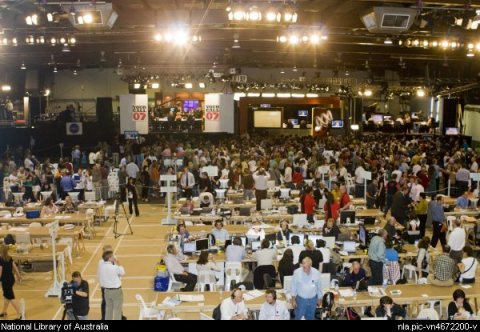Australians vote for government representatives at national, state and local levels in a 3 to 4 year cycle. National elections are run by the Australian Electoral Commission.
Key online resource
Australian Electoral Commission (AEC)
- independent statutory body
- created by a 1984 amendment to the Commonwealth Electoral Act 1918
- responsible for the registration of political parties
Key AEC website pages:
- a brief history of the evolution of universal suffrage, secret ballots and compulsory voting in Australia.
- current Acts and Amendments governing the role of state and federal electoral commission
- a complete list of registered, deregistered and renamed parties since 1984
States and Territories are responsible for elections within their jurisdictions.
What you can find in the Library
To find information about Australian elections, search the Catalogue by subject. When entering search terms, include the year of the election if known. Some examples are:
Selected resources:
The Australian electoral system : origins, variations and consequences by David M. Farrell and Ian McAllister (2005). Overview of the development of the electoral system in Australia
The Australian voter : 50 years of change by Ian McAllister (2011). Discussion of Australian attitudes to voting
Voting and elections written by Associate Professor Rodney Smith and Dr. Anika Gauja (2013), from the Hot Topics series published by the Legal Information Access Centre, State Library of NSW. A condensed version is available online
After the election : what happens? prepared by Leo Hardiman, Damian Page, Leah Edwards (2013). General information and background from the Australian Government Solicitor
From secret ballot to democracy sausage: how Australia got to compulsory voting by Judith Brett (2019)
Case Study
Q: I am in the United States. I have heard about an Australian law that forces people to vote or they get a fine. Can you supply more details?
Voting at federal elections is compulsory for all citizens included on the Australian Federal electoral roll. The introduction of compulsory voting varied from state to state; you can read about the background and history of compulsory voting in Australia on the Australian Electoral Commission website.
Anyone who is unable to provide a valid and sufficient reason to the Divisional Returning Officer for failure to vote at a federal election, and who does not wish to have the matter dealt with by a Magistrates Court may pay a penalty.
If the person refuses to pay the penalty then the matter may be referred to a Magistrates Court, where a higher penalty (plus costs) may be ordered on conviction.
On average about 5 per cent of enrolled voters fail to vote. In recent federal elections, with a voter turnout of approximately 95 per cent, informal voting (blank or not properly completed ballots) has accounted for about 5 per cent of all the votes cast (see: Compulsory voting in Australia from the Australian Electoral Commission).
